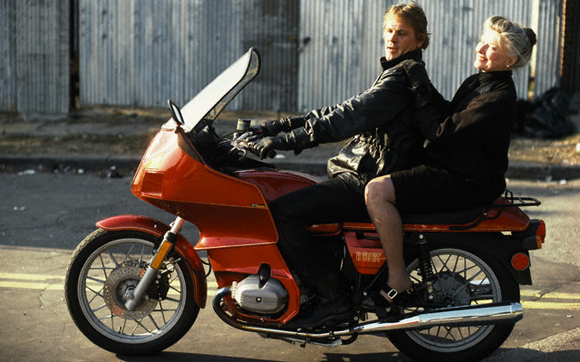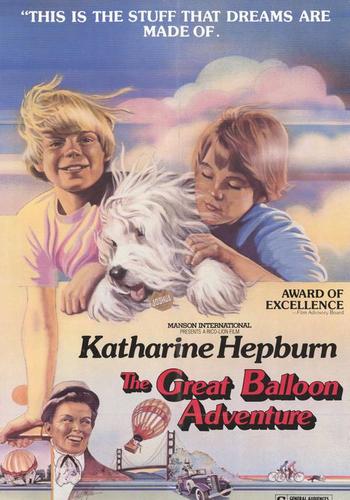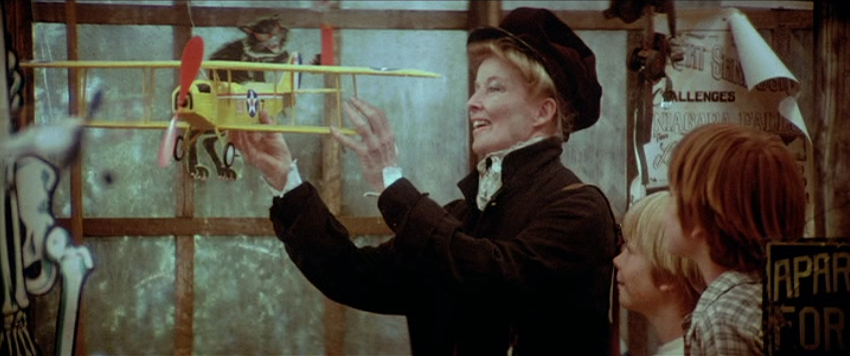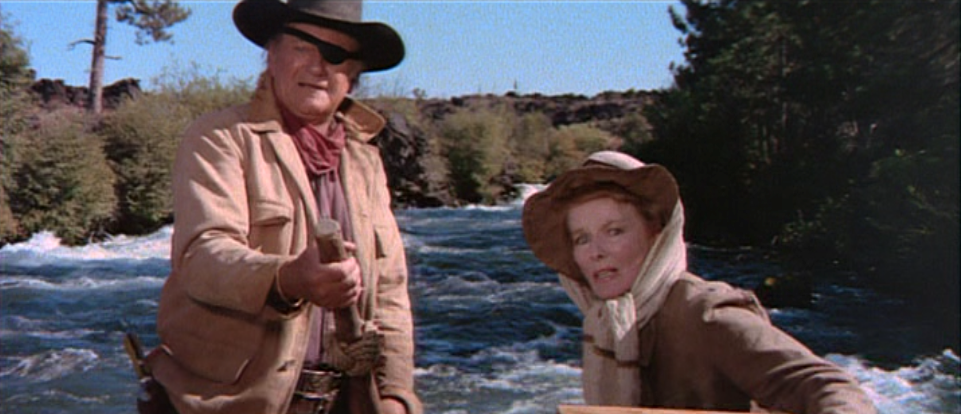A Year with Kate: Grace Quigley (1984)
 Wednesday, November 12, 2014 at 2:01PM
Wednesday, November 12, 2014 at 2:01PM Episode 46 of 52: In which Katharine Hepburn makes a comedy about suicide with Nick Nolte because she's a living legend and she can do whatever she wants.
 The truth about a career that spans seven decades, is that for the majority of that career, you'll be what’s traditionally thought of as “old.” Hollywood does not like “old.” The magnificent part of watching Katharine Hepburn age has been watching her flip old age (and Hollywood) the bird. True, her head wobbles, her hair is gray, and her voice is reedy. Still, she leaps after hot air balloons, bicycles, hauls wood, and even wins Academy Awards at an age far past what would traditionally be considered “her prime.” For the past few years, Kate has looked old, sounded old, and even talked about being old, but the stubbornly energetic woman has never felt old. Which is why Grace Quigley is more than a little scary.
The truth about a career that spans seven decades, is that for the majority of that career, you'll be what’s traditionally thought of as “old.” Hollywood does not like “old.” The magnificent part of watching Katharine Hepburn age has been watching her flip old age (and Hollywood) the bird. True, her head wobbles, her hair is gray, and her voice is reedy. Still, she leaps after hot air balloons, bicycles, hauls wood, and even wins Academy Awards at an age far past what would traditionally be considered “her prime.” For the past few years, Kate has looked old, sounded old, and even talked about being old, but the stubbornly energetic woman has never felt old. Which is why Grace Quigley is more than a little scary.
Grace Quigley (originally titled The Ultimate Solution of Grace Quigley) is meant to be a black comedy about assisted suicide. Think Arsenic and Old Lace by way of Harold and Maude. Nick Nolte stars as a neurotic hitman with the misfortune of meeting Mrs. Quigley (our own Kate), an octogenarian who blackmails him into starting a business with her: killing people who want to be killed. Homicidal hilarity ensues, or would, except it isn't very funny. Despite a striptease set to Tchaikovsky, a hearse chase, and several attempts at witty banter, the movie vacillates between morbidity and dullness. The problem is threefold: 1) director Anthony Harvey (who’d beautifully directed Kate in The Lion in Winter and The Glass Menagerie) lacks the light touch needed for black comedy. 2) Nick Nolte’s character is about as good at killing people as he is at delivering one-liners (which is to say not good at all). Most importantly, 3) For the first time onscreen, Katharine Hepburn looks so frail that it is uncomfortably easy to believe she wants to die.

Kate's brush with death and life affirmations after the jump.









